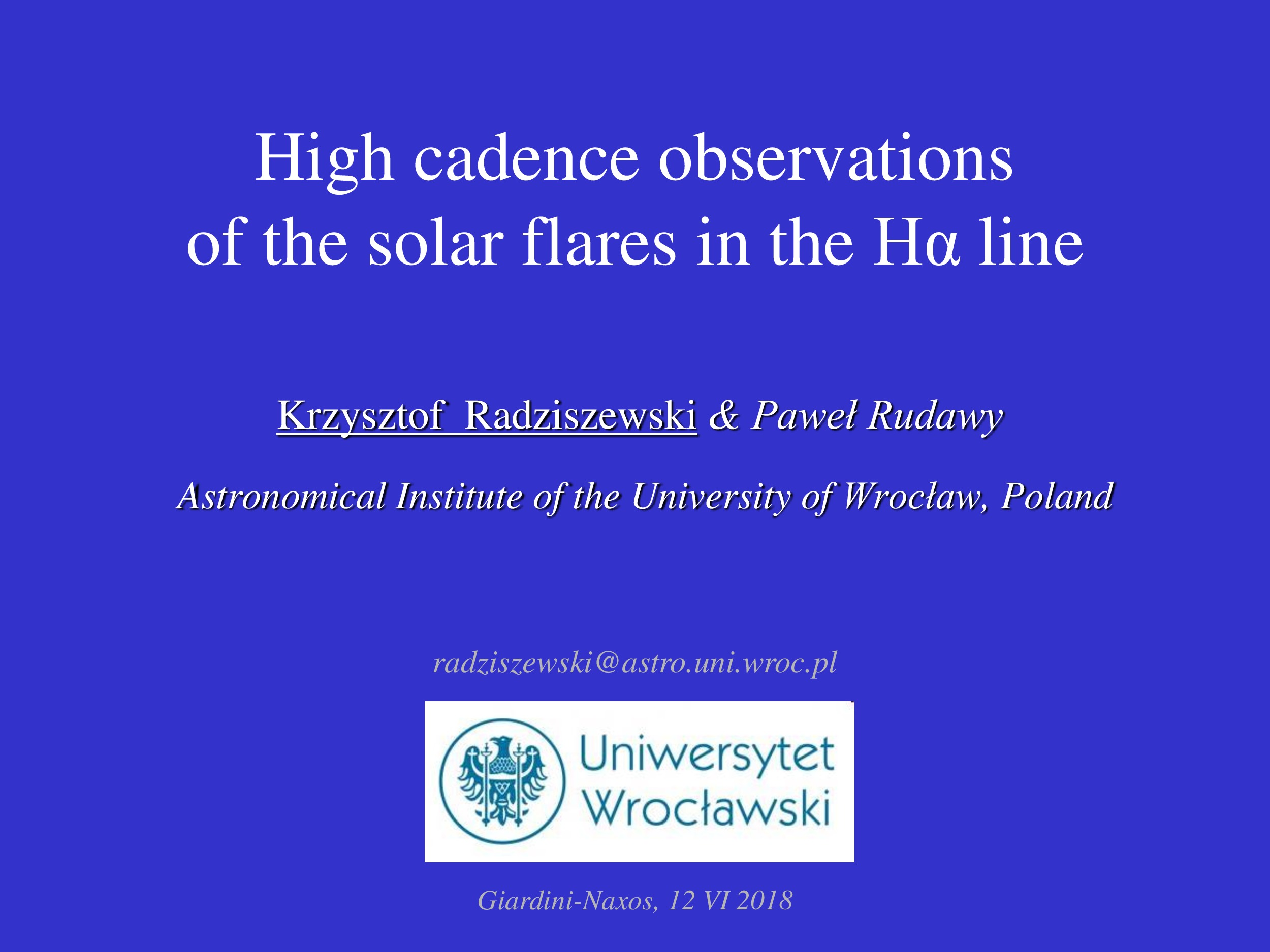Affiliation
Astronomical Institute of the University of Wrocław, Poland
Main category
Natural Sciences (Astrophysics and Astrononmy)
Abstract
The H-alpha emission of chromospheric plasma in solar flares is powered mostly by high energy particle beams and conduction. Particles (mostly electrons) transfer energy from the reconnection region in a fraction of second, while conduction front is much slower, and its contribution reached maximum some tens of seconds after energy release in the solar corona. Energy deposed in the chromosphere causes immediately variations of the hard X-ray emission and after 1-2 seconds correlated variations of the emission of the flaring kernels in the H-alpha line. Basic properties of the emissions in the Hα line induced by particles and frons, geometrical properties of the magnetic loops in the chromosphere and basic properties of the energy deposition layers were already investigated by us using - inter alia - Multi-Channel Subtractive Double Pass (MSDP) observations having spatial, spectral and high time resolutions. More detailed observations, collected with high cadence in broad spectral ranges and with sub-arcsec spatial resolution, as offered by EST telescope, are necessary for detailed studies of interactions of the non-thermal electrons accelerated during impulsive phases of flares with chromosphere.
On the basis of our fast-cadence (20 images per second) observations of the flaring kernels collected with MSDP imaging spectrograph we discuss new opportunities offered by the EST telescope in investigations of the feet of the flaring loops, with a special interest in stratification of the energy deposit in the different depths into the chromosphere and its emission in thick chromospheric lines during the impulsive phase of the solar flares.
Do you have problems viewing the pdf-file? Download presentation
here
If the presentation contains inappropriate content, please
report the presentation. You will be redirected to the landing page.
